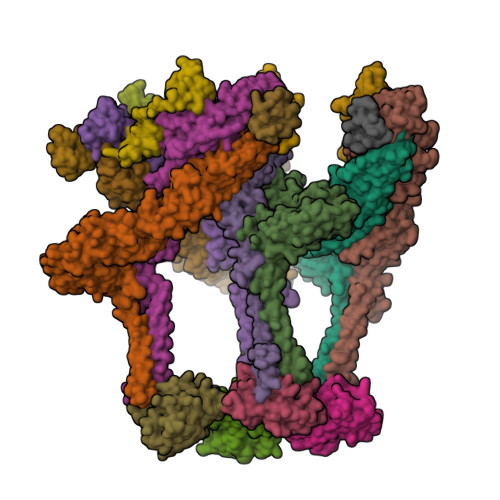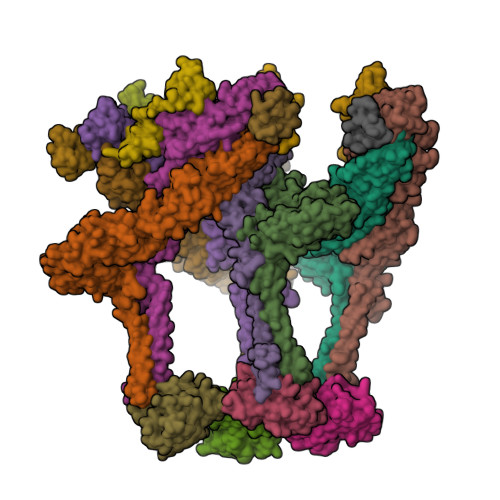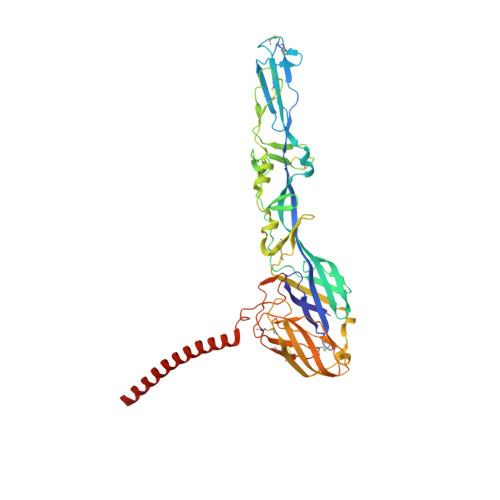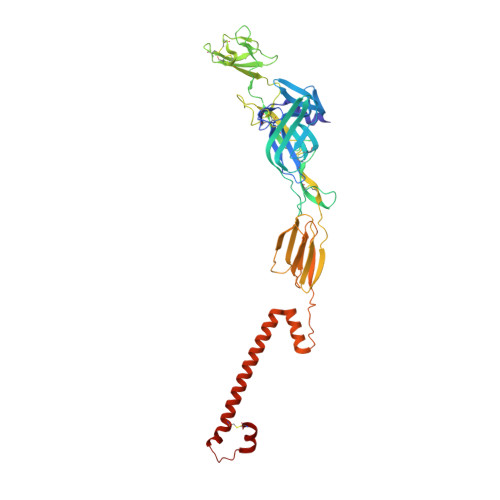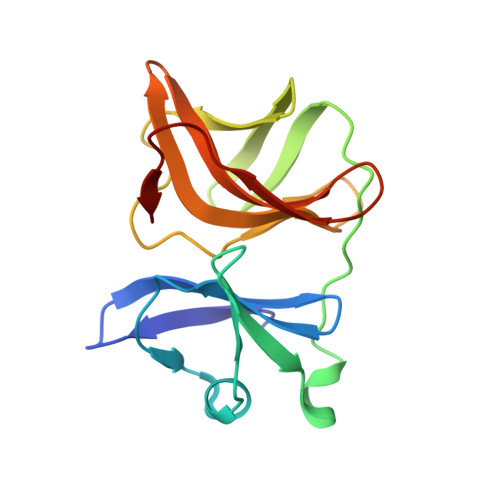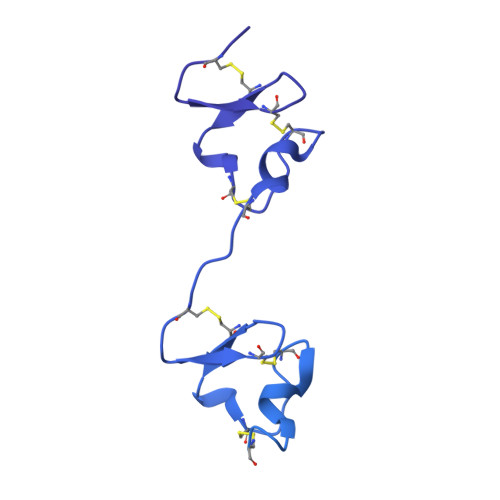Structural and functional basis of VLDLR usage by Eastern equine encephalitis virus.
Adams, L.J., Raju, S., Ma, H., Gilliland Jr., T., Reed, D.S., Klimstra, W.B., Fremont, D.H., Diamond, M.S.(2024) Cell 187: 360-374.e19
- PubMed: 38176410
- DOI: https://doi.org/10.1016/j.cell.2023.11.031
- Primary Citation of Related Structures:
8UFA, 8UFB, 8UFC - PubMed Abstract:
The very-low-density lipoprotein receptor (VLDLR) comprises eight LDLR type A (LA) domains and supports entry of distantly related alphaviruses, including Eastern equine encephalitis virus (EEEV) and Semliki Forest virus (SFV). Here, by resolving multiple cryo-electron microscopy structures of EEEV-VLDLR complexes and performing mutagenesis and functional studies, we show that EEEV uses multiple sites (E1/E2 cleft and E2 A domain) to engage more than one LA domain simultaneously. However, no single LA domain is necessary or sufficient to support efficient EEEV infection. Whereas all EEEV strains show conservation of two VLDLR-binding sites, the EEEV PE-6 strain and a few other EEE complex members feature a single amino acid substitution that enables binding of LA domains to an additional site on the E2 B domain. These structural and functional analyses informed the design of a minimal VLDLR decoy receptor that neutralizes EEEV infection and protects mice from lethal challenge.
Organizational Affiliation:
Department of Pathology & Immunology, Washington University School of Medicine, St. Louis, MO 63110, USA.








